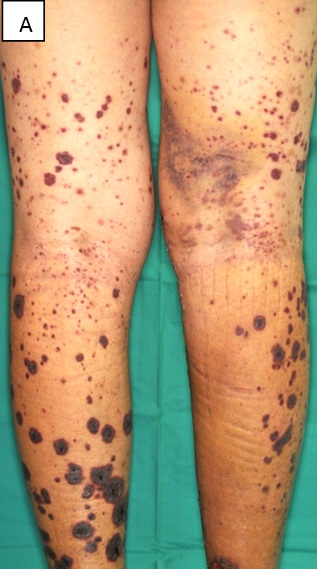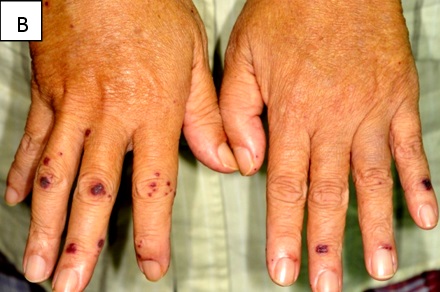Vasculitis is an inflammation of blood vessels. It can lead to thickening and narrowing of blood vessels which results in restriction of blood flow and finally causing organ and tissue damage. Any vessels in any part of the body can be affected by vasculitis. It can affect large arteries to small blood vessels. The damage to the organ will be greater if the bigger blood vessel are affected by vasculitis.
Causes
Vasculitis can be caused by an infection, medications, cancer, blood disorders or autoimmune diseases such as systemic lupus erythematosus. However, no cause can be found in about half of the cases. Infection such as viral or bacterial infection can be associated with vasculitis. There are many drugs which have been associated with vasculitis such as antibiotics, anticonvulsant, diuretics and non steroidal anti-inflammatory agents.
Cancer and certain blood disorders can also cause vasculitis. There is another group of vasculitis known as Primary Systemic Vasculitis which can be a severe disease affecting various organs. Examples of primary systemic vasculitis are: Wegener’s Granulomatosis, Churg Strauss Disease, Polyarteritis Nodosa, Microscopic Polyangiitis.
Signs and Symptoms
Vasculitis can affect any organ such as skin, kidney, lung, gastrointestinal tract and brain, producing a wide range of symptoms. Skin is usually the first noticeable sign of vasculitis. Skin vasculitis commonly presents as raised, nonblanching red or bruise like marks on the skin. These rashes usually happen on limbs especially lower limbs and often cause no symptoms but can sometimes cause pain. In some cases, there might be evidence of livedo reticularis which is net-like reddish blue discoloration occuring mostly on legs, arms and trunk due to dilatation of capillary blood vessels and stagnation of blood wihtin the vessels. If medium sized vessels in the skin are affected, there may be skin ulceration or large painful raised lesions. In addition, there may be other symptoms related to involvement of organs other than skin such as fever, nausea, vomiting, joint and muscle pain, numbness of hand/feet, breathlessness, blood in urine, abdominal pain and blood in faeces.
  |
| Vasculitis on skin presents as raised, nonblanching red or bruise like marks on the skin. A) Lower limbs B) Hands |
Diagnosis
The diagnosis of vasculitis requires biopsy of involved tissue such as skin, kidney, lung and nerves. Your doctor will also do a list of blood tests to determine the degree of organ involvement and underlying cause of vasculitis.
Treatment
The treatment of vasculitis generally depends on severity of the disease and the organs involved. Treatment are generally directed at stopping the inflammation and suppressing the immune system which causes the vasculitis. If vasculitis is related to a drug, it is important to stop the offending medication. Infection related vasculitis will usually resolve spontaneously when the infection settles. In mild cases of skin vasculitis, topical steroid can be used to control the rash. However, oral medications such as steroid, colchicine, indomethacin, dapsone may be needed in more persistent cases of vasculitis especially with multiorgan involvement. Immune suppression drugs such as cyclophosphamide may be needed when primary systemic vasculitis is suspected.
References
- British Association of Dermatologists Patient Information Leaflet. Cutaneous Vasculitis. November 2013
- Merk Manual Professional Version. Overview of Vasculitis. April 2013
- Dermatology. Third edition June 2012. Jean Bolognia, Josephy Jorizzo, Julie V Schaffer
| Last Reviewed | : | 23 August 2019 |
| Writer | : | Dr. Tang Jyh Jong |
| Accreditor | : | Dr. Noor Zalmy bt. Mohd Ali Azizan |
| Reviewer | : | Dr. Nazatul Shima bt. Abd Rahim |







